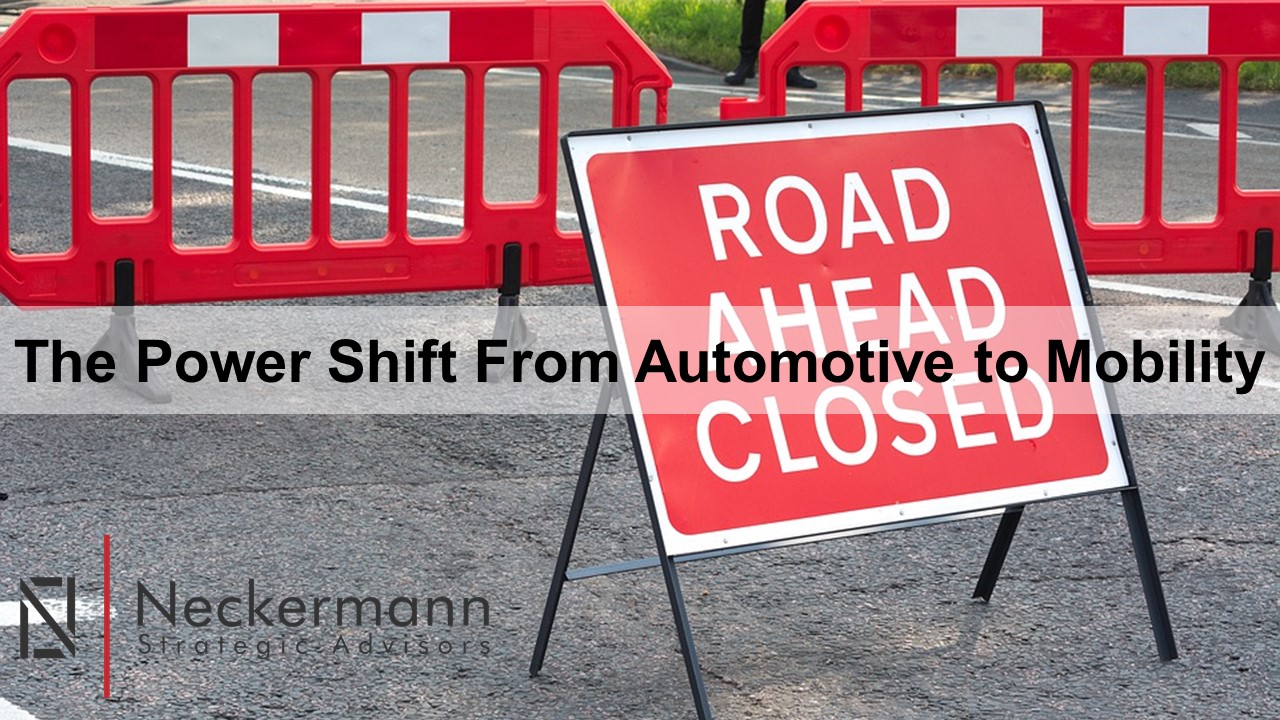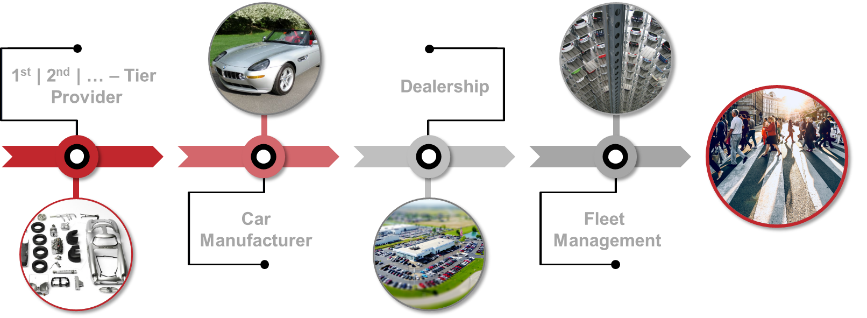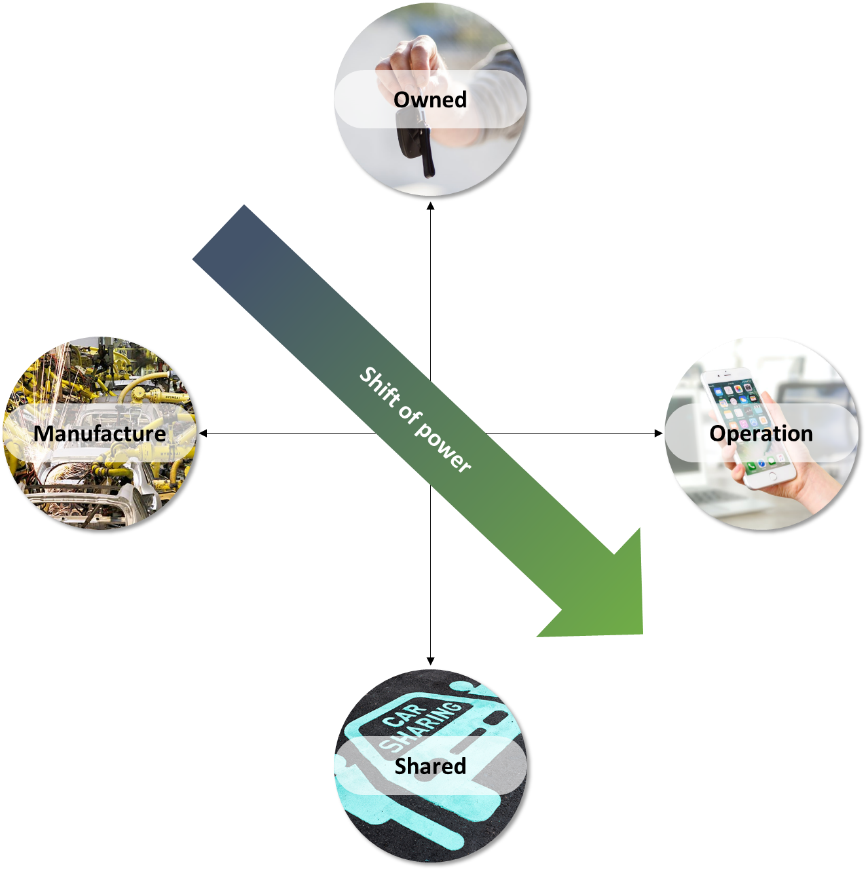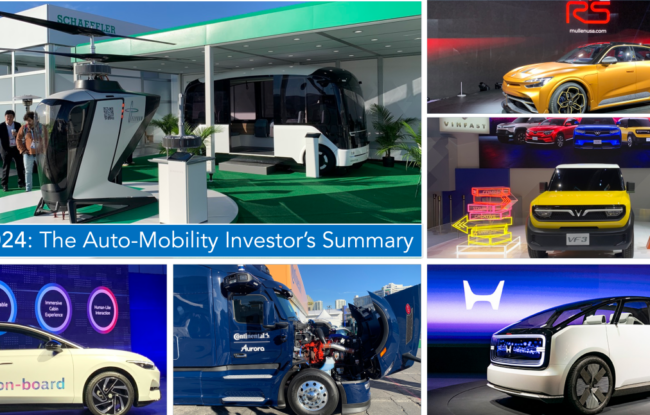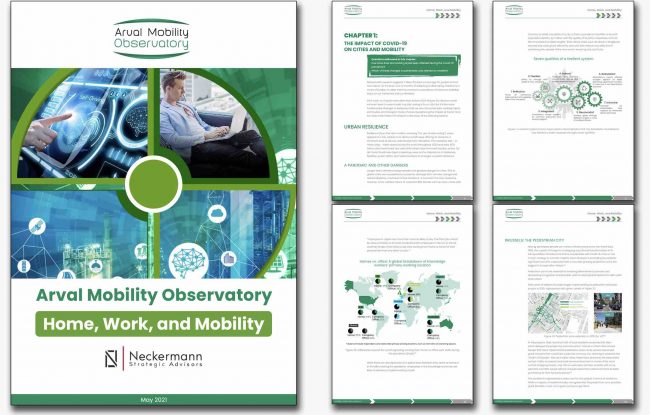How large is the mobility industry?
This nascent and fast-growing system, in which novelties, disruptions and new trends are common, is easy to admire, but difficult to define. Leveraging our network of associates and experience gathered with our clients as a telescope, we identified over 900 companies and start-ups creating, developing and implementing transportation of tomorrow. Along this journey, we defined the boundaries of the mobility industry and differentiated it from other related industries, such as energy, travel, and of course automotive.
To many OEMs, suppliers, analysts and other consultants, there is still a feeling that mobility is emerging out of automotive. To those in mobility who have never set a foot in the automotive industry, it’s clear that this is a completely new industry.
From manufacturing to operation
First, automotive is all about manufacturing a large volume of vehicles (i.e. assets), often for private use. Mobility, driven by new business models such as ridehailing, carsharing, subscriptions and usage (not ownership) is much more focused on operating assets. The result is a concentration of companies in activities taking place once the vehicle is produced. 65% of the firms listed in our database deal with “systems and data”, “fleet management”, “mobility operation” and “mobility aggregation” – in other words, have no role in manufacturing. Another 25% are focused on supplying manufacturers with technology. Only around 10% of the mobility value chain is concerned with manufacturing.
From owned to shared
Second, private usage of a vehicle usually occurs via purchase or leasing, both of which can be associated with (private) ownership. Mobility moves along megatrends such as the sharing economy and sustainability, which push stakeholders to offer services based on collective usage. From single-passenger machines to mass-transit vehicles, smart modes of transport suggest that users are shifting from ownership to usership.
Drawing those variables on a graph gives an auto-mobility matrix where the ‘heart’ of each industry can be identified.
The traditional – and frankly old – automotive sector is experiencing a leak in its power and influence amongst the overall transport industry in favour of new modes of transport, gathered under the mobility umbrella. Market caps, revenues and other vital factors of corporates confirm our work on the value chain, and a shift in the focal point.
Bricks and Mobility, our research topic for 2021
Shifting towards a shared mobility world will not only require a change in users’ habits, technology developments, and regulatory adaptations, but also a change in infrastructure. Drop off zones, parking for free-float bikes, scooters and mopeds as well as smart building access to shared vehicles are but a few examples of what our future real estate developments will have to offer. Those interactions between real estate (i.e. the bricks) and our modes of transport will gain in importance over time.
We are never tired of exploring uncharted horizons and creating new connections between concepts that seem unrelated, but are eventually fundamentally dependent on mobility. If we’ve made you curious, please reach out.
By Frederic John, Senior Consultant at Neckermann Strategic Advisors.

